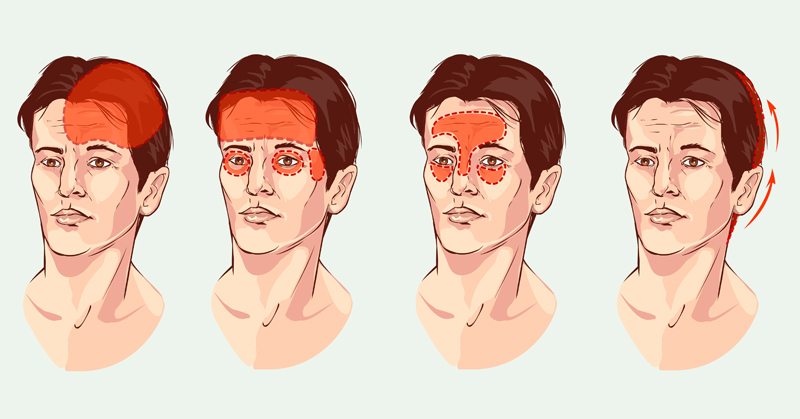We all get headaches every once in a while. My go-to before taking any type of medicine to get rid of the pain is to drink lots of water and eat a banana. With certain types of headaches, the water and banana trick won’t work. There are hundreds of different types of headaches, and millions of Americans are misdiagnosed every year when they seek medical help after experiencing headache symptoms. Scientists still don’t know exactly what causes many types of headaches, so figuring out how to treat a certain kind can be tricky.
While a headache may be brought on by something fairly simple such as dehydration or fatigue, it could also be a sign of a more serious illness. In the video below, Dr. Sakib Qureshi MD, a neurologist, explains the “red light warning signals” that may accompany certain headaches, and how to differentiate between a temporary headache and something that may be more life-threatening.
Before just popping a few pills when you feel the onset of a headache or a migraine, take the time to notice your symptoms to make sure there isn’t something more serious going on. There are four main types of headaches – the most common ones – and each one can tell you a little something about your body. Knowing what type of headache you are experiencing can allow you to treat it correctly. While painkillers may work for temporary relief, I’ve included some more natural options to help you alleviate your pain.
1. Tension Headache
A tension headache is the most common type of headache. It feels like a constant ache or pressure around your head, especially at your temples or the back of your head and neck. It may feel like a radiating pain above and below your eyes. A tension headache isn’t as severe as a migraine, so it won’t typically cause nausea or vomiting. Experts believe this type of headache may be caused by the contraction of neck and scalp muscles, which can be a response to stress.
How to treat it: Ginger tea can help to reduce inflammation, and adding peppermint oil to your hairline can create a cooling sensation to relax the muscles in your head and neck. Combining these two natural remedies will help to eliminate the pain of a tension headache.
2. Migraine
Migraines affect 38 million men, women and children in the United States. They are most common between the ages of 25 and 55, but no matter your age, you could experience one as well. A migraine is more than just a bad headache. It’s an extremely debilitating collection of neurological symptoms. It includes a severe recurring and intense throbbing pain on one side of the head (in about 1/3 of attacks, both sides are affected), accompanied with other symptoms that can include visual disturbances, nausea, vomiting, dizziness, extreme sensitivity to sound, light, touch and smell, and tingling or numbness in the face. This type of headache tends to radiate from the top of the face downward.
How to treat it: Vitamin B12 (riboflavin), has been shown to help those who suffer from migraines, as have magnesium and omega-3 fatty acids. Make sure you are getting enough of these in your diet on a daily basis to help prevent migraine attacks. A 2011 study also found that aerobic exercise was as effective at preventing migraines as the preventative migraine medication topiramate, concluding that daily exercise may be used as a replacement for medication.

3. Cluster Headache
Cluster headaches usually occur over one eye, and they affect more men than women. A cluster headache is recurring, and it can occur in a group or a cycle. A cluster headache can appear suddenly and cause a severe, debilitating pain on one side of the head. When experiencing a cluster headache, you may also experience a watery eye and nasal congestion or a runny nose. The cause is unknown, but this type of headache occurs when a nerve pathway in the base of a brain is activated.
How to treat it: The active ingredient in capsaicin cream is cayenne pepper. Apply a small amount of this cream to your nostril where you are experiencing pain. It can help to block nerve pain signals.
4. Sinus Headache
A sinus headache occurs when a sinus becomes inflamed, and it can lead to pain. Sinus headaches are caused by an infection, and they are usually accompanied by a fever, and pressure around the eyes, cheeks and forehead.
How to treat it: Drink lots of fluids to hydrate your body. Warm water can help open your sinuses and reduce inflammation. Vitamin C is rich in antioxidants and can aid the body in fighting infections, so eat a few oranges or other foods rich in Vitamin C, or sip on some lemon green tea. You may also want to try a hot and cold compress, warm soup, and some fresh ginger, which contains anti-inflammatory and pain killing properties.
h/t: sun gazing


